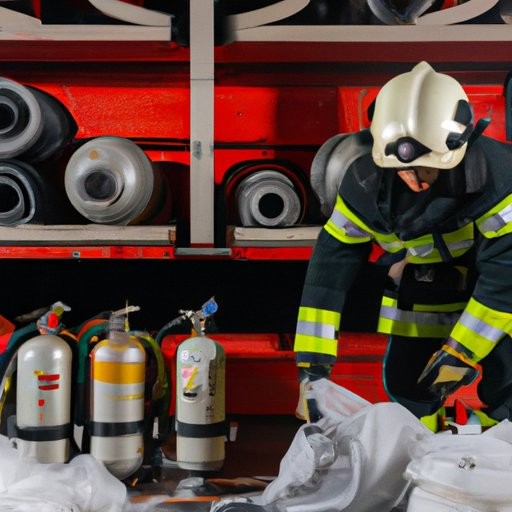Recent Blog Posts
What You Need to Know About Firefighting Foam Lawsuits in 2025
Across the United States, legal challenges related to firefighting foam, especially Aqueous Film Forming Foam (AFFF), are evolving rapidly. With heightened awareness of the health risks linked to PFAS (per- and polyfluoroalkyl substances), an increasing number of lawsuits are being filed by firefighters and communities impacted by these persistent chemicals. This article delves into the critical aspects of these lawsuits, providing a comprehensive overview of what to anticipate in 2025.

Why Are Firefighting Foam Lawsuits Increasing?
The surge in firefighting foam lawsuits stems from mounting evidence linking AFFF exposure to severe health issues. Firefighters, who have relied on AFFF for its effectiveness in extinguishing fuel fires, now face elevated risks of cancer and other health problems due to prolonged PFAS exposure. Studies show that PFAS can accumulate in the body over time, leading to conditions such as liver damage, immune system disorders, and reproductive issues (NIH, 2024).
Are Your PFAS Levels Higher Than Other Emergency Workers? Here's Why
Per- and polyfluoroalkyl substances (PFAS) are increasingly concerning for emergency workers in the United States. Known for their persistence in the environment and human body, these chemicals pose potential health risks. Understanding why emergency workers, particularly firefighters, have higher PFAS levels is crucial for enhancing occupational safety and health.

What Are PFAS and Where Are They Found?
PFAS are synthetic chemicals used in various industrial and consumer products due to their resistance to heat, water, and oil. Common sources include firefighting foams, non-stick cookware, water-repellent clothing, and food packaging. Firefighters are particularly exposed to PFAS through Aqueous Film-Forming Foam (AFFF), widely used in firefighting operations.
What You Should Know About PFAS in Firefighting Foam and Your Health
Per- and polyfluoroalkyl substances (PFAS) are under increasing scrutiny due to their persistence in the environment and widespread use. A major concern is their presence in firefighting foam, particularly Aqueous Film-Forming Foam (AFFF), which poses potential health risks. This article examines how PFAS exposure through firefighting foam affects both firefighters and the general public across the United States.

How Does Firefighting Foam Lead to PFAS Exposure?
Firefighting foam, especially AFFF, is crucial for extinguishing flammable liquid fires because it forms a vapor-suppressing film. The effectiveness of AFFF is largely due to PFAS chemicals, known for their water and oil-repellent properties. Firefighters face higher PFAS exposure because they frequently use AFFF during training and emergencies. Studies show that firefighters have higher PFAS levels in their blood compared to the general population, raising concerns about health issues like cancer, liver damage, and immune system effects.
Why You Should Care About PFAS-Free Foam in U.S. Airports
PFAS, or per- and polyfluoroalkyl substances, are notorious for their environmental persistence and potential health risks. Known as "forever chemicals," they are particularly concerning in firefighting foams used at airports. Embracing PFAS-free alternatives is vital to safeguarding both the environment and public health.

What Are PFAS and Why Are They Used in Firefighting Foam?
Since the 1940s, PFAS have been used in products for their resistance to heat, oil, stains, grease, and water. In firefighting, PFAS are integral to Aqueous Film Forming Foam (AFFF), which is highly effective against flammable liquid fires. Unfortunately, these same properties lead to environmental persistence and bioaccumulation.
How Do PFAS Impact Your Local Stormwater and What Can You Do?
What Are PFAS and Why Are They a Concern for Stormwater?
Per- and polyfluoroalkyl substances (PFAS) are synthetic chemicals found in various industrial and consumer products due to their resistance to heat, water, and oil. These chemicals pose significant environmental and health risks, especially concerning stormwater systems. PFAS can infiltrate stormwater through industrial discharges, runoff from contaminated sites, and atmospheric deposition.

Once in the environment, PFAS are highly persistent and mobile, allowing them to travel long distances and contaminate both surface and groundwater. This contamination endangers aquatic ecosystems and human health, as PFAS can accumulate in wildlife and have been associated with health issues in humans, such as cancer, liver damage, and immune system problems (EPA, 2024).
Why You Should Be Concerned About PFAS in Your Firefighter Gear
Firefighters depend on their gear to remain safe while serving our communities. However, many might be unaware that their protective clothing could contain harmful chemicals known as per- and polyfluoroalkyl substances (PFAS). These chemicals are a growing concern due to their persistence in the environment and potential health risks.

What Are PFAS and Why Are They in Firefighter Gear?
PFAS are man-made chemicals prized for their resistance to heat, water, and oil, making them common in firefighting gear to enhance protection. Unfortunately, these same properties prevent PFAS from breaking down, earning them the label "forever chemicals." This durability poses health risks to firefighters frequently exposed to PFAS in their gear.
How Does NIEHS Research on PFAS Impact Your Health?
The National Institute of Environmental Health Sciences (NIEHS) leads critical research on per- and polyfluoroalkyl substances (PFAS), persistent environmental chemicals posing significant health risks. This research is vital for uncovering PFAS's health impacts and guiding risk reduction efforts.

What Health Risks Are Linked to PFAS?
PFAS exposure is associated with serious health issues, including cancer, liver damage, and immune system weakening. NIEHS studies focus on how PFAS interact with our bodies, potentially disrupting hormones and causing reproductive and developmental problems. As of May 2025, state laws continue to address these concerns, underscoring the importance of ongoing research.
Why You Need to Be Aware of the EPA's Actions Against PFAS Contamination
The Environmental Protection Agency (EPA) is actively tackling the pervasive issue of PFAS (per- and polyfluoroalkyl substances) contamination. Known as "forever chemicals," PFAS present significant health and environmental risks. It's crucial to grasp the EPA's initiatives to safeguard public health and the environment.

What Are PFAS and Why Are They a Concern?
PFAS are man-made chemicals used since the 1940s for their heat, water, and oil resistance, found in products like non-stick cookware and firefighting foams. Their persistence in the environment and human body is alarming.
How Could PFAS in Your Drinking Water Be Putting You at Risk?
Per- and polyfluoroalkyl substances (PFAS) are synthetic chemicals used since the 1940s in products like non-stick cookware and firefighting foams due to their resistance to heat, water, and oil. However, their persistence in the environment raises concerns about contamination, particularly in drinking water.

PFAS contamination in drinking water is a pressing public health issue across the United States. Often referred to as "forever chemicals," PFAS can accumulate in the human body over time, making it essential to understand their risks for effective public health protection.
What Health Risks Do PFAS in Drinking Water Pose?
Exposure to PFAS through drinking water is linked to several health problems. Research indicates that PFAS can cause cancer, liver damage, immune system issues, and reproductive problems, which are major concerns for health officials and researchers.
Is There a Safer Alternative to Toxic AFFF Firefighting Foams?
Firefighters in the United States have long depended on Aqueous Film Forming Foam (AFFF) to effectively combat fuel-based fires. However, the inclusion of toxic PFAS chemicals in AFFF has sparked significant health and environmental concerns. As awareness of these risks grows, identifying safer alternatives becomes increasingly urgent.

What Are the Risks of Using AFFF?
While AFFF is effective against flammable liquid fires, it contains per- and polyfluoroalkyl substances (PFAS), which are under scrutiny for their persistence in the environment and potential health impacts, including cancer, liver damage, and reproductive issues. Firefighters are particularly at risk due to frequent exposure during training and emergencies. These chemicals can accumulate in the body, posing long-term health threats. Moreover, AFFF contamination has been detected at military bases, airports, and fire stations, elevating environmental and public health concerns.


